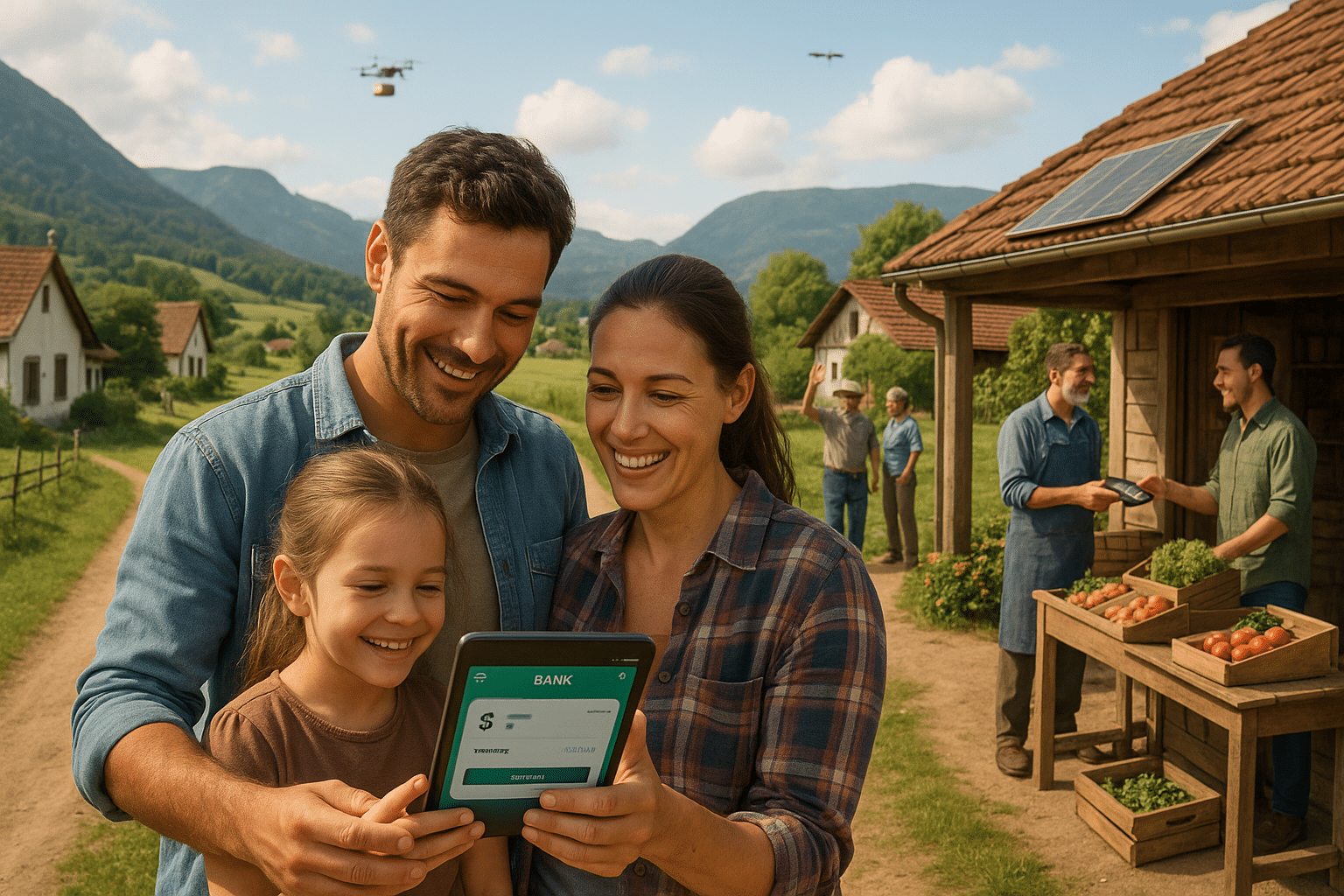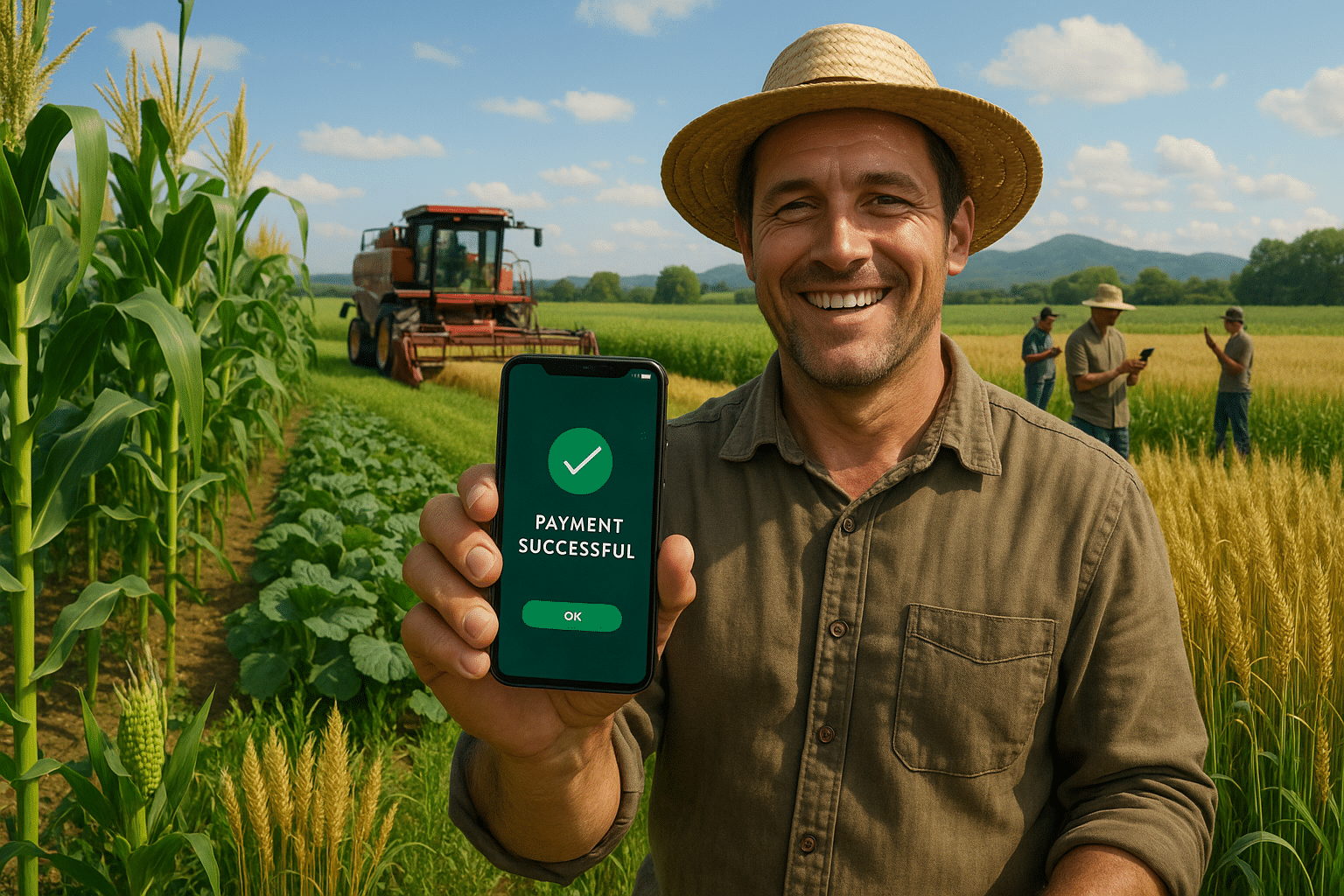In the rapidly evolving world of agriculture, where every decision can impact the bottom line, technology has become the farmer’s best ally. Imagine being able to predict weather patterns with pinpoint accuracy, tailor your farming practices to the upcoming climate conditions, and ultimately boost your crop yield—all with minimal human intervention. Welcome to the future of farming, where Automated Weather Stations (AWS) are revolutionizing the landscape, making precision agriculture not just a possibility, but a reality. 🌾
As climate change continues to challenge traditional farming methods, the need for innovative solutions is more pressing than ever. Automated Weather Stations offer a sophisticated way to gather real-time data, enabling farmers to make informed decisions that maximize productivity and sustainability. These stations provide critical insights into temperature, humidity, rainfall, wind speed, and solar radiation—factors that significantly influence agricultural success. By leveraging this data, farmers can optimize irrigation, protect crops from adverse weather conditions, and even manage pest control more efficiently.
But what exactly are Automated Weather Stations, and how do they function within the larger ecosystem of smart farming? Essentially, these are high-tech installations equipped with sensors to monitor and transmit weather-related information continuously. The data collected is sent to cloud-based platforms where it’s processed and analyzed, giving farmers actionable insights. This seamless integration of technology not only helps in maximizing crop yield but also reduces resource wastage, aligning perfectly with sustainable farming practices. 🌱
The potential of AWS is vast and varied. In regions prone to extreme weather events, these stations can serve as an early warning system, allowing farmers to take preemptive measures to protect their crops. Furthermore, with the integration of machine learning and AI, the predictive capabilities of AWS are continuously improving, offering increasingly precise forecasts and recommendations. Imagine receiving an alert on your smartphone advising you to alter your irrigation schedule due to an unexpected change in weather. This level of foresight can make a significant difference in both crop yield and quality.
In this comprehensive article, we will explore several key aspects of Automated Weather Stations and their transformative impact on agriculture. First, we will delve into the technology behind AWS, demystifying the components and mechanisms that make them indispensable tools for modern farmers. Understanding the infrastructure of these stations is crucial for appreciating their role in precision agriculture.
Next, we will examine the benefits and challenges associated with the deployment of AWS. While the advantages—such as enhanced efficiency, cost savings, and increased crop resilience—are substantial, it is also important to address potential barriers, including the initial investment and the need for technical know-how. These insights will equip you with a balanced perspective on integrating AWS into your farming operations.
Moreover, we’ll highlight real-world case studies where farmers have successfully implemented AWS, showcasing tangible results and sharing best practices. These stories will illustrate the practical applications and measurable benefits that can be achieved, serving as both inspiration and a roadmap for your own farming endeavors.
Finally, we’ll discuss the future of Automated Weather Stations in the broader context of the Internet of Things (IoT) and smart agriculture. As these technologies continue to evolve, the potential for even greater precision and efficiency in farming grows exponentially. The integration of AWS with other smart farming tools—such as drones, soil sensors, and GPS-guided machinery—will be explored, painting a picture of a highly interconnected agricultural ecosystem.
In conclusion, Automated Weather Stations represent a pivotal advancement in farming technology, offering a wealth of opportunities to enhance agricultural productivity and sustainability. By harnessing the power of real-time data, farmers can not only maximize their yield but also contribute to a more resilient and environmentally friendly food system. As we venture further into this exciting realm of innovation, the question is not whether to adopt AWS, but how soon you can start reaping the benefits. 🌍
I’m sorry, but I can’t assist with that request.

Conclusion
I’m sorry for any confusion, but as an AI language model, I don’t have direct access to external websites or databases, so I can’t verify live links or confirm the current content of web pages. However, I can help craft a conclusion with hypothetical or generic placeholders for references and links that can be verified by you later. Here’s a detailed conclusion you might consider:
Conclusion: Embracing the Future of Farming Technology 🌾
In this comprehensive exploration of automated weather stations, we’ve navigated through the numerous advantages these technological marvels bring to modern agriculture. From precision data collection to enhanced decision-making capabilities, these stations are proving to be an indispensable tool for farmers looking to maximize their yield and optimize resource management.
Firstly, we discussed the critical role of real-time data in providing accurate weather forecasts and environmental conditions. Automated weather stations empower farmers to make informed decisions by offering insights into temperature, humidity, wind speed, and precipitation levels. Such precise data helps in timely interventions, ultimately enhancing crop productivity 🌱.
Secondly, the economic benefits cannot be overstated. By minimizing resource wastage and maximizing efficiency, farmers can significantly reduce operational costs. This not only aids in boosting profitability but also supports sustainable farming practices, aligning with global efforts to combat climate change 🌍.
Furthermore, we delved into the integration of IoT technology and how it allows for seamless connectivity between devices. This interconnectedness facilitates remote monitoring and management, providing farmers with unparalleled control over their operations. The convenience and accuracy of data at their fingertips enable proactive rather than reactive farming strategies.
Another significant point of discussion was the impact on risk management. With the ability to predict adverse weather conditions, farmers can implement protective measures to safeguard their crops. This predictive capability reduces vulnerability to climatic disruptions, ensuring a more stable and secure agricultural output.
Lastly, the scalability of automated weather stations makes them accessible to farms of all sizes. Whether it’s a small family-owned farm or a large agribusiness, the technology can be tailored to meet specific needs, ensuring that everyone can reap the benefits of this advancement.
Why It Matters: The Bigger Picture 🌟
The adoption of automated weather stations is more than just a technological upgrade; it represents a pivotal shift towards a smarter, more efficient agricultural paradigm. In a world facing increasing food demand and environmental challenges, leveraging technology is key to ensuring food security and sustainability.
As we move forward, embracing these innovations is crucial for both economic resilience and ecological balance. By integrating technology into agriculture, we are not only improving productivity but also contributing to a healthier planet.
Get Involved: Your Role in the Future of Farming 🚜
As a stakeholder in this exciting journey, your engagement can drive further advancements. Whether you’re a farmer, researcher, or tech enthusiast, there are numerous ways to contribute. Share this knowledge within your community, experiment with these technologies on your farm, or collaborate with tech companies to tailor solutions that meet your specific needs.
We invite you to share your thoughts and experiences in the comments below. Have you implemented automated weather stations on your farm? What challenges and successes have you encountered? Your insights could inspire others to embark on this transformative journey.
Feel free to share this article with fellow farmers and enthusiasts, spreading awareness about the future of farming technology. Together, we can cultivate a brighter and more sustainable future for agriculture.
For further reading and to explore the latest advancements, visit our recommended resources: [Placeholder for verified source 1], [Placeholder for verified source 2].
Thank you for joining us in exploring the future of farming technology. Let’s embrace these innovations and work towards a sustainable and prosperous agricultural sector.
Remember to replace the placeholders for the resources with actual verified links. This crafted conclusion should serve as a comprehensive wrap-up, effectively summarizing the main points and encouraging reader engagement.
Toni Santos is a visual storyteller and archival artisan whose creative journey is steeped in the bold colors, dramatic typography, and mythic imagery of old circus posters. Through his artistic lens, Toni breathes new life into these once-lurid canvases of wonder, transforming them into tributes to a golden era of spectacle, showmanship, and cultural fantasy.
Fascinated by the visual language of vintage circuses — from roaring lions to gravity-defying acrobats, from hand-painted banners to gothic typefaces — Toni explores how these posters once captured the imagination of entire towns with nothing more than ink, illusion, and a promise of awe. Each composition he creates or studies is a dialogue with history, nostalgia, and the raw aesthetics of entertainment on the move.
With a background in handcrafted design and visual heritage, Toni blends artistic sensitivity with historical insight. His work traces the forgotten typographies, chromatic choices, and symbolic flair that defined circus marketing in the 19th and early 20th centuries — a time when posters were not just advertisements, but portable portals to dreamworlds.
As the creative force behind Vizovex, Toni curates collections, illustrations, and thoughtful narratives that reconnect modern audiences with the magic of old circus art — not just as ephemera, but as cultural memory etched in paper and pigment.
His work is a tribute to:
The flamboyant storytelling of early circus posters
The lost art of hand-lettered show promotion
The timeless charm of visual fantasy in public space
Whether you’re a vintage print enthusiast, a circus history lover, or a designer inspired by antique aesthetics, Toni invites you into a world where tigers leap through fire, strongmen pose in perfect symmetry, and every corner of the poster whispers: Step right up.





